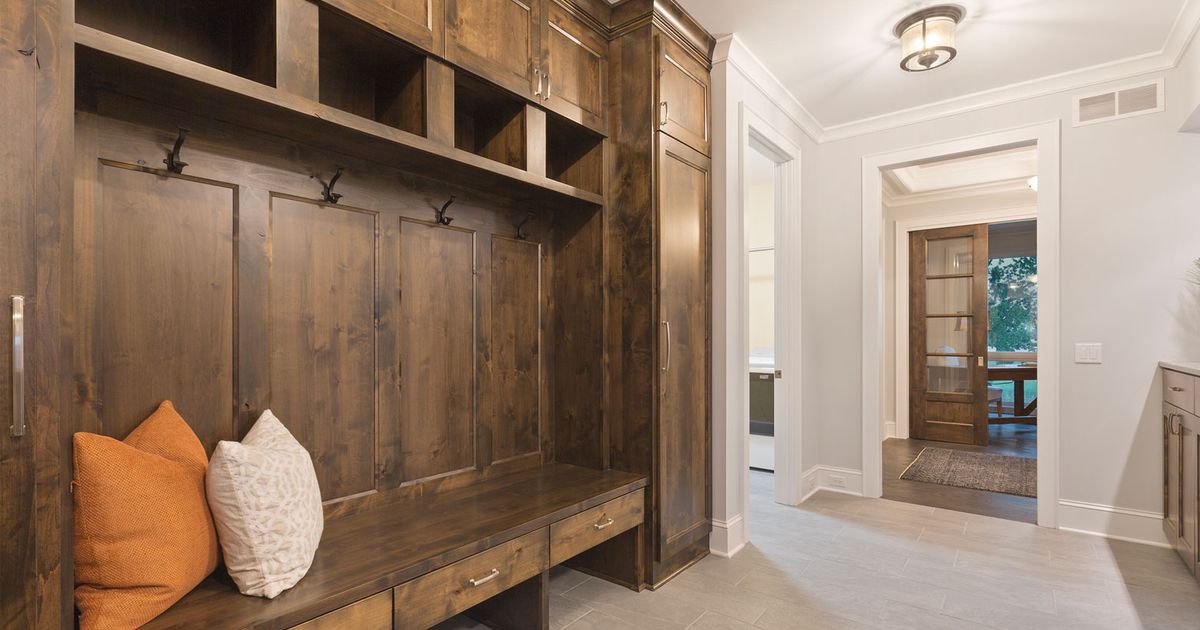The pandemic has changed what persons need to have and want in a residence, and builders and architects are responding with new, extra adaptable flooring ideas. From far more out of doors house to amplified overall flexibility inside of, home design is shifting to satisfy the calls for of the second.
Here are some creating tendencies affected by how we’ve lived the earlier two yrs.
Homebuyers want extra area
The most important modify is the footprint of new-create houses. “Buyers want much more sq. footage,” states Rose Quint, assistant vice president for survey study at the National Affiliation of Home Builders (NAHB).
Quint states that the normal measurement of recently created houses tends to be cyclical. It experienced been trending downward because it final peaked at close to 2,700 square ft in 2015. In 2020, it went back up. After sinking to all over 2,450 square ft, new-property dimensions are mounting once again, and averaged 2,561 square toes in the to start with quarter of 2022.
New significance on entryways
A want for more home isn’t the only property design and style pattern that’s emerged given that the pandemic, according to Donald Ruthroff, principal at Dahlin Team Architecture in California. “People are looking for their property to be a protected house, to be additional useful than it was,” Ruthroff says.
That improved performance starts correct at the entrance door: The pandemic led to a resurgence in the acceptance of foyers and vestibules at the primary entryway.
Property owners were searching for a way to different shipping and delivery employees and other short-term people from the key residing region, and a independent space at the key entrance was the remedy. In reality, Ruthroff suggests, vestibules first grew to become popular architectural capabilities all through the Spanish flu pandemic a century back.
Secondary entrances, like a back-door mudroom extra often made use of by the household, noticed a makeover, too. In particular, the so-named drop zone where by footwear, coats and bags generally get dumped experienced to morph in response to house owner calls for.
“We’re viewing that room get much larger since it has to do extra,” Ruthroff mentioned. “People want to appear into the home and be ready to clean their palms and fall their do the job clothes, specifically if they are a front-line worker.”
Adaptability is king
Even more inside the house, folks also appeared to make the current space do additional.
“We actually communicate about design switching in terms of the property not having more substantial, but hunting at each sq. inch of the property and earning guaranteed it’s working to its most successful,” Ruthroff says.
From glass doorways that produce an business space out of a nook in the residing space to furniture alternatives that support areas functionality greater, revolutionary alternatives of all kinds have gained amplified curiosity more than the very last couple a long time.
“Our president talks about the Swiss Army knife kitchen,” Ruthroff offers as an instance. “Kitchens don’t need to be more substantial, automatically, but they will need to do extra. It is about far more in-depth kitchen cabinetry that has far more successful storage.”
Open floor strategies endure
Even as people today need their room to do additional, the open up ground strategy remains common with homeowners and prospective buyers.
Quint states that in a current NAHB study, about 34% of remodelers documented operating on assignments aimed at building floor strategies extra open up. Only 2% mentioned they had do the job that designed more isolated areas.
Ruthroff agrees. “The open flooring system is not heading absent,” he claims. “But we are making alternatives for spaces adjacent that are related, but not thoroughly linked.”
1 futuristic remedy which is just starting off to get focus, he suggests, is movable walls. “We’re observing some arrival of flexible wall units that will offer the skill to wall off or change the flooring strategy,” he claims. “That’s even now a couple many years off in its serious software, but I think that’s coming.”
Architects and builders are also staying much more intentional about creating areas at the correct scale. “Some of the spaces we were generating around 2010 had been overly huge,” Ruthroff suggests. “We often refer to it as twirling area, just house for space’s sake. But it comes down to: You just cannot sit really much from the television ahead of it gets not comfortable.”
Indoor/outside living emphasized
Owners began to location larger value on out of doors dwelling place during the pandemic. Patios, decks and porches have been well-known additions in excess of the last several years, Quint says.
Ruthroff says that more individuals now want outside areas that feel like a all-natural extension of their inside rooms. This features working with complementary supplies each inside of and out, and building clear sight lines to the outdoor.
“It’s the thought of making absolutely sure individuals experience linked in a holistic way that contributes to bodily wellness and wellbeing,” he states. “The amount of purely natural light-weight you get in the residence is vital to holding persons healthier.”








